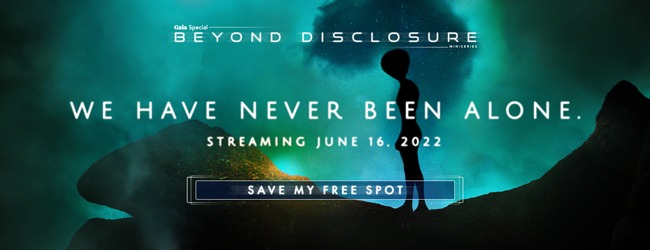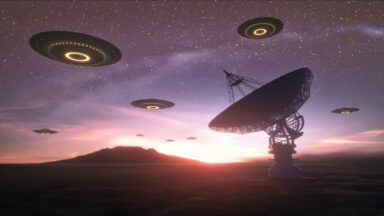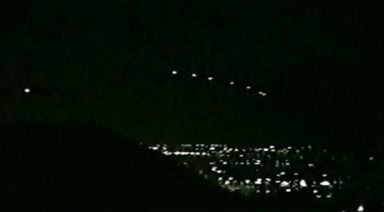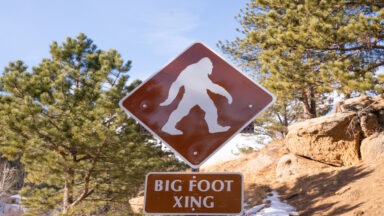The Government’s UFO Hearings Are Just a Distraction

‘Disclosure’ might be one of the most hackneyed buzzwords in ufology, especially when it’s prefaced by the word “government.”
“When will we get disclosure?”
“We want government UFO disclosure now!”
These interminable demands from the UFO community, and now the general public, have grown louder since 2017’s New York Times exposé, “Glowing Auras and ‘Black Money’: The Pentagon’s Mysterious UFO Program.”
The explosive piece explained how the Navy regularly encountered what it termed, “Unidentified Aerial Phenomena,” with “unusual aerial systems interfering with military weapon platforms and displaying beyond-next-generation capabilities.”
After the article’s release, the Department of Defense admitted the videos and encounters it referenced were, in fact, legitimate and that it could not explain them. In further interviews with Navy pilots, including Cmdr. David Fravor, — whose experience became the most widely discussed — the name “TicTac” was given to the craft, for its resemblance to the breath mint.
To the uninitiated general public, this was a shocking admission. The government is admitting UFOs are real? And they’re concerned it could be a threat to national security?
Even to those who had spent countless hours down the myriad rabbit holes of internet UFO theories, where the line between mythos and fact is increasingly blurred, this was kind of surprising. Typically, the DoD would give some fantastic excuse, like the infamous ‘swamp gas’ claim, or a politician would hold a press conference and dress up his assistant as an alien to make a mockery of it all — that’s how it’s always worked!
But while some in ufology were initially taken aback by these concessions, the awe only lasted so long before the term “PSY-OP” and other colorful pejoratives were hurled toward any belief that the government would actually divulge what it knows.
And rightfully so, certain whistleblowers have outlined how the labyrinthine layers of government bureaucracy are specifically designed not to reveal anything of substance; all the important, paradigm-shifting secrets are hidden within Unacknowledged Special Access Programs. These notorious USAPs are funded by the intelligence apparatus’ $84 billion black budget, require no congressional oversight, and are managed with impunity by private-sector, military-industrial contractors.
Yet the media waits with bated breath for a House Intelligence hearing on what the Pentagon might tell us on the subject. Sure, it’s progressive that certain congresspeople are now trying to ease the stigma of reporting unexplained encounters for military personnel, but would they actually disclose something groundbreaking to the public?
The TicTacs Go Back Decades
While the recent House Intelligence hearing on UFOs was the first government panel on the phenomenon since Project Blue Book ended in 1969, the groundbreaking revelations have been few and far between. Last summer, the Office of the Director of National Intelligence (ODNI) delivered its ‘preliminary assessment’ on UFOs in the form of a big nothingburger.
However, later releases from military documents, as well as off-handed comments from retired, high-ranking spooks, revealed some interesting information, including reports of pilots suffering radiation burns and military aircraft being suspended in mid-air.
Again, these are pretty wild revelations to the mainstream media, but redundant evidence to those who have been studying the phenomenon. It seems to confirm that these craft are powered by some type of radioactive, anti-gravity technology that employs zero-point energy or another highly theoretical technology capable of warping spacetime — a technology the military recently admitted to having studied in order to create a weapon that can “make the hydrogen bomb seem more like a firecracker, in comparsion.“
Then, late last year, the ODNI released another report stating it could not explain 143 of 144 military encounters with UFOs.
When asked about the report at a press conference, director of national intelligence Avril Haines, said she entertained the possibility that exotic technology observed in these UFOs could potentially be extraterrestrial. This statement came on the heels of NASA administrator Bill Nelson saying something to the same effect — two shocking public admissions from a government that has, for decades, concocted mundane dismissals and denials of the phenomenon.
But if you ask any researcher with a modicum of knowledge on key events in ufological history, you’ll find that descriptions of the “TicTacs” are corroborated by numerous UFO encounters dating as far back as WWII.
The foo fighters encountered by both Axis and Allied forces exhibited the same mind-boggling maneuvers, displayed no means of traditional, thermodynamic propulsion, and showed no obvious signs of hostility toward human aircraft.
Then there’s Bob Lazar’s testimony about a spacecraft he allegedly reverse-engineered at S4, the secret compound within Area 51. According to Lazar, the craft he studied was powered by an exotic, highly unstable nuclear isotope called Element 115, which would be synthesized by Russian scientists decades later. Could this extremely radioactive element, now called “Moscovium,” potentially explain the radiation burns reported by pilots?
Lazar also described the way in which these craft moved, explaining how they went “belly up” before zipping off at high-speed — video footage of the “TicTacs” released by the Pentagon and discussed by Cmdr. Fravor show this exact maneuver.
The Likelihood of Government Disclosure
Though it’s easy to be skeptical about the government’s willingness to disclose what it knows about UFOs, the truth is that there are many in government who really would disclose this information to the public, if they were actually privy to it. Over the past few years, several high-profile politicians have attempted to find out what could be buried away in bureaucratic backchannels or intelligence agency vaults. Even President Obama has come out on national television saying he tried to access that information.
But alas, those aforementioned USAPs are likely hiding these secrets, as they contain the potential to disrupt the power dynamic of the global elite; the ones who profit from multinational conglomerates in fossil fuels, banking, and military contracting. A group that will do anything to maintain the secrecy of the technology it has, or at least frame any disclosure scenario through a lens of fear while weaponizing it in any way possible.
With all the evidence we have and the fading taboos in discussing the phenomena, whose narrative should we trust? The one of fear and hostility, in which UFOs that have never attacked or engaged with us — outside of showing us they have the ability to shut down our nuclear weapons systems — are a threat to national security? Or the narrative that they are likely here to send us a message (read: warning) that our current trajectory of planetary self-destruction may be leading to our demise?
The Senate Is Unhappy With the Intelligence UFO Report, Demands More
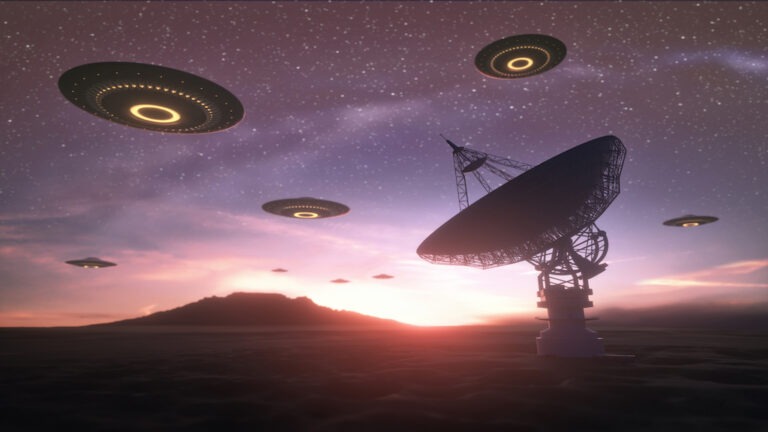
Congress is doubling down on UFO legislation — first the House and now the Senate is demanding answers going back decades.
Members of Congress who are not pleased with the lackluster response from security agencies and the Department of Defense’s response to last year’s UFO-related legislation called for sweeping changes and oversight to the reporting of UFO activity. They just passed even stronger language in the Intelligence Authorization Act for 2023.
Mirroring the House legislation, the Senate would also create a “secure system” for reporting UAPs, as well as loosen the restrictions on, or release people from, non-disclosure agreements. It also calls for a deep dive into how UAP-related activities were handled by the government dating back to 1947.
So what makes this bill so groundbreaking? Nick Pope served with the UK’s Ministry of Defense covering UAP activity.
“We now have some really strong language in the draft Intelligence Authorization Act for fiscal year 2023. The bottom line is that Congress is continuing to say to the DoD and intelligence community, ‘we want action on the UAP issue,’ and they are clearly not letting it go, and the language is robust. They are articulating a number of must-haves here that we have not seen before.”

